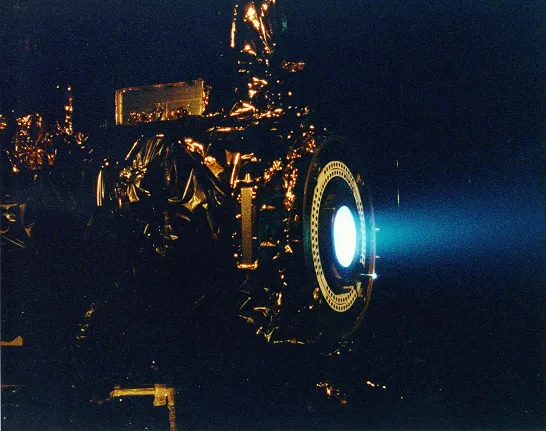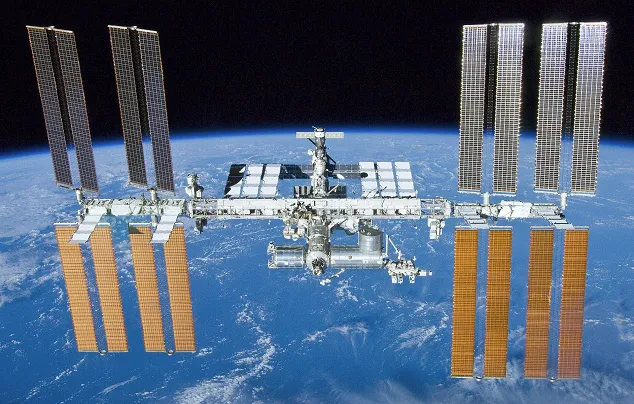It is not an exaggeration to say that the stars are far away. The nearest star system, Alpha Centauri is about 4.3 light years away. That means it takes light traveling at 300,000 km/s over 4 years to get there (Earth time not photon time).
This is 40,681,440,000,000 km (40 trillion km) and at the speeds that humans can currently achieve for space ships this translates to a trip that could exceed several human lifetimes.
Enter The Generation Ship
One solution proposed for getting humans to the stars is called the Generation Ship. The idea is you launch a largish group of breeding humans and they are committed to creating replacement levels of children to populate and run the ship when the first generation ages and dies.
What the ship does with the parents' bodies is not something I want to think about (cough -- compost -- cough).
The second generation will themselves have children and so on and so forth until several generations later the ship arrives at the colony planet with a whole population of people who never knew Earth or even the first crew.
The trip to the distant star and new planet will take a very long time and equipment always breaks down. After several generations it is not reasonable to expect any of the machinery to still be functioning. This leads to the idea of the constantly renewed generation ship.
On board will be a database of absolutely everything, every pump, pipe, cable, computer chip, nut, bolt and toilet seat. The component list will stretch into the millions and it would be the goal of the crew to manufacture and replace and recycle each part on a continual basis.
This means that every part on the ship will need to be recycled and replaced on a predefined schedule and that the children will need to be trained on every aspect of ship manufacture. The ship itself will need to have machine shops and other manufacturing facilities and people will need to work regular 9 to 5 jobs making new parts for the ship.
3-D printers will come in handy for this task but that also means that the ship's crew will also need to know how to make new 3-D printers so that they can replace any printer that gives up and dies.
The invention of 3-D printers that can print 3-D printers would come in very handy here.
The ship could even carry with it large stores of pure ores and other raw materials to help them in their replacement work and to make up for inevitable losses. Large chunks of iron, nickel, titanium, aluminum, silicon and all of the other rare materials will be critically needed as cargo.
Even the ship's hull will need to be recycled and replaced to counteract the constant damage from micrometeors. A modular design in which one segment can be shut down, evacuated and replaced would be a necessary design feature.
An Antimatter-Powered Star Drive
Antimatter is very likely the only viable energy source to power ships for human travel between the stars. The sheer energy density of antimatter is staggering.
I have discussed antimatter in a few of my earlier posts and provided some mass-energy sample calculations:
- How Much Antimatter Was Needed To Blow Up Alderaan?.
- https://steemit.com/space/@procrastilearner/antimatter-ya-us-an-orbital-antimatter-factory
Our largest ship in space is the International Space Station (ISS) and it has a mass of 420,000 kg.
Let's say we sent a ship of this mass to the stars and let's say we accelerated it to 50% of the speed of light. At this speed relativistic mass gain is only 15% or so and we can ignore it without introducing much error.
A mass of 420,000 kg moving at 50% of the speed of light (150,000,000 m/s) has a kinetic energy of E = 1/2 mv2 which is 4.7 x 1021 J.
Using the mass-energy equivalence equation E = mc2 and solving for m we get m = E/c2.
Plugging in the numbers find that we would need to convert 52,500 kg of mass into energy. One half of this would be antimatter and the other half would be normal matter.
So this means that we would need to carry about 26,000 kg of antimatter on board the ship to get it up to a reasonable star traveling speed. Of course the ship will also need to be decelerated so the requirements are doubled which brings us back up to an antimatter fuel need of about 52,000 kg.
To get a 420,000 kg ship up to 50% light speed and back down to zero would need 52,000 kg of antimatter reacting with 52,000 kg of matter for a total of 104,000 kg or about 25% of the ship's mass.
If we used anti-water as the form of antimatter that would be 52,000 litres of anti-water or a cube about 37 metres wide.
Closing Words
In summary, to get anywhere in this galaxy fast would need an awful lot of antimatter. It is dangerous stuff so losing containment would mean that your ship would turn into the brightest star in the galaxy, for a few seconds.
Using less antimatter would be more likely which means a slower ship and a longer trip. This means the trip would be a multi-generational affair.
To keep the crew occupied and the ship running means that everything, and I mean everything, on the ship will need to be replaced. The crew would essentially turn into a large factory constantly recycling and rebuilding every component that there is. And yes, even the crew will need to be composted and recycled.
For a trip like this, the ship and crew that finished the trip would not be the ship and crew that started the trip.
Thank you for reading my post.
Post Sources
https://en.wikipedia.org/wiki/Generation_ship
https://en.wikipedia.org/wiki/International_Space_Station
https://en.wikipedia.org/wiki/Mass_in_special_relativity




